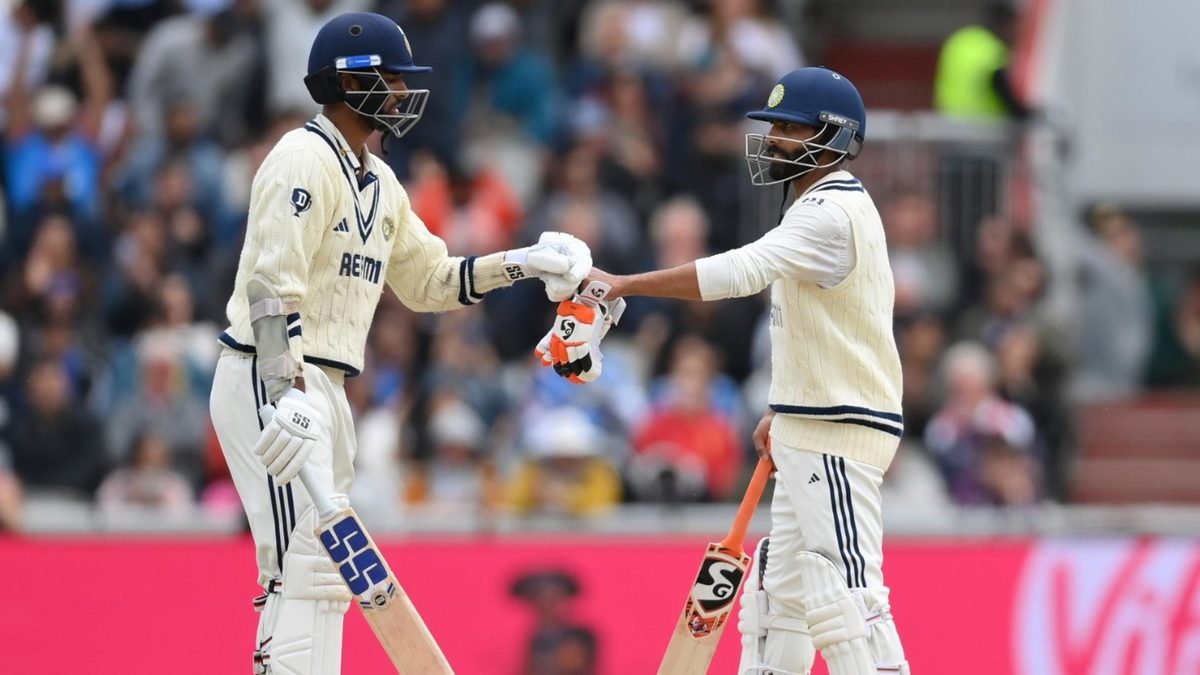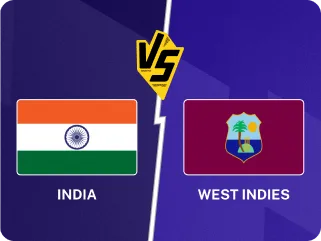
Ravindra Jadeja and Washington Sundar pulled off one of the great match-saving Test efforts at Old Trafford against England, keeping India alive in the series from what should have been an impossible situation.
India looked dead and buried at Old Trafford, after England posted the highest-ever Test total at the ground. They left themselves more than five sessions to bowl India out, and had them 0-2 in the first over of their response. Take into account a long tail with a record of collapsing, and the ability to knock off whatever target they may need in double-quick time, England would have already been eying up a victory lap at The Oval.
But, hundreds from Shubman Gill, Sundar and Jadeja, as well as a 90 from KL Rahul, meant that the two sides ended up shaking hands before 6pm on Sunday evening, and that the show will roll on back to London with a series draw still within reach for India.
Sundar and Jadeja pull off the impossible
Gill continuing to tick off boxes on his records checklist played a crucial part in salvaging the game, and his partnership with KL Rahul took India from 0-2 through two wicketless sessions and into the final morning. But the main plaudits should go to the two all-rounders who protected the tail and Rishabh Pant's broken foot from having to fend off England's attack on Day Five. They got their just rewards, ensuring they both added a hundred to their record – Sundar's first in Test cricket – before shaking hands with Stokes.
The pair saw out 334 deliveries, having come together in the morning session, knowing just one wicket would expose the lower-order. They put on 203 runs to put India into the lead, as well as negotiating their way through a new-ball spell. As a result, the series scoreline remains at 2-1 ahead of the fifth and final Test.
How does the Sundar-Jadeja partnership compare to other modern draw-salvaging efforts?
For much of its history, batting out a draw has been a skill prized almost above all else in Test cricket. The ability to bat for time rather than chase runs, declarations or capitulate to defeat when faced with intimidating odds goes against the natural instincts of the way the game is now played. But India's fourth-innings follows a rich pedigree of stoicism when staving off defeat.
Ricky Ponting, Old Trafford 2005
On the same ground almost exactly 20 years ago, Ricky Ponting kept the Ashes scoreline level with a classic of the genre. Set over 400 to get in a day and with their top-order decimated by England's class of 05 pacers, Australia were five down not long after Lunch. Ponting ground out 156 from 275 balls as wickets fell periodically at the other end, his own the last to fall, leaving Brett Lee and Glenn McGrath to survive four overs. They survived by a whisker, England one wicket away from victory.
Faf du Plessis, Adelaide, 2012
Two knocks stand out in South Africa's fourth innings in Adelaide in 2012. The most prominent was Faf du Plessis, on Test debut, sticking at the crease for 367 deliveries to score 110* – a strike rate of 29.25 arguably more impressive than if he'd whacked it off 50 balls. South Africa had been 77-4 at the start of the fifth day, they finished it on 248-8, Du Plessis still at the crease. A special mention goes to AB de Villiers, fighting his natural instincts for 220 balls to score 33 runs.
ALSO READ: It's blasphemy, but could India be better if Jasprit Bumrah didn't take the new ball?
Brendon McCullum, Wellington, 2014
While he's on the receiving end this time, England's head coach denied India during his own days as a player. New Zealand were bowled out for 192 in their first innings in Wellington, Ishant Sharma and Mohammed Shami sharing all 10 wickets between them. India then racked up a 246-run lead, and New Zealand were 94-5 in response. Enter McCullum, who marshalled the rear-order while scoring a triple hundred himself, BJ Watling and Jimmy Neesham both scoring hundreds from Nos.7 and 8. New Zealand ended up declaring on 680-8, and also managed to get India three down before shaking hands.
Gautam Gambhir, Napier, 2009
Over to India's head coach, who had rivalled his counter-number's efforts five years previously. New Zealand amassed 619 in the first innings in Napier, before India were bowled out over 300 runs behind. Sent out to bat again, Gambhir knuckled down. He batted for 436 balls across almost five sessions, ekeing out 137 runs before VVS Laxman finished the job. India ended up on 474-4, saving the game by a distance.
Other memorable moments
Bill Edrich, Durban, 1939 - A timeless Test that ended in a draw? Test cricket peaked early when, after 10 days of attritional competition, neither side could even come close to striking a decisive blow. Astoundingly, when rain brought the match to an end, with England in danger of missing their boat home, England were only 42 runs away from their 696-run target, and had five wickets in hand. At the centre of England's efforts was Bill Edrich, who scored a double-century and a third of England's final innings runs.
Gary Kirsten, Durban, 1999 - England had declared in their first innings against South Africa on Boxing Day the week before the new millenium, Phil Tufnell having batted out five deliveries with Nasser Hussain before the captain took them off. South Africa were then dismantled by Andy Caddick and asked to follow-on. In true gritty nature, Kirsten played the second-longest innings ever in Test cricket, staying at the crease for 878 minutes (over 14 hours), to score 275 runs off 642 balls (fourth-longest Test innings by balls faced).
Follow Wisden for all England vs India updates, including live scores, latest news, team lineups, schedule and more. The live streaming details for the ENG vs IND series in India, UK, USA and rest of the world can be found here. For Wisden quizzes, head here.








